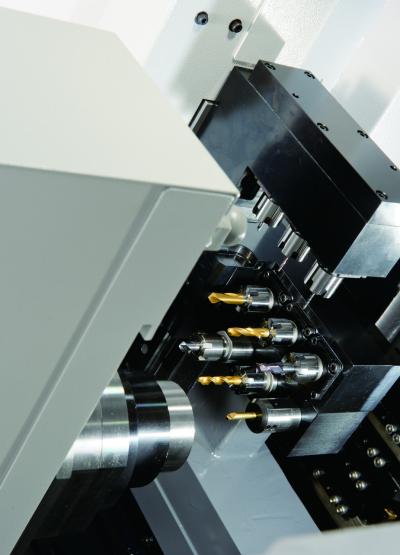
Marubeni Citizen-Cincom (MCC) is excited to introduce Citizen’s new, state-of-the art, Swiss style lathes – the next generation M32 and L12.
The M532 VIII is the newest version of the Citizen Cincom M series turret style Swiss turning center. This 32mm capacity machine (with the capability to increase to 38mm) has a new design that helps improve productivity and operating convenience. The standard 12 cutting axes includes a B axis for angular drilling and contour milling. In addition, the 10 station turret with half index capability provides 20 positions.
With the excitement of the M532, MCC is also delighted to showcase the new generation Cincom L212X. The L12X features the all axis simultaneous Cincom System M70 Control (Mitsubishi Meldas 70LPC-VU) as well as 15,000 rpm main spindle. This new generation machine also features a Y2 axis on the back spindle which expands the range of usable tools. In addition, the maximum spindle speed has been increased to 12,000 rpm which shortens acceleration/deceleration times.
Both of these machines employ Citizen’s user-friendly editing function which utilizes multi-line, multi axes programming along with superimposed and synchronized control, making setting up the most complex job easy.
Contact Details
Related Glossary Terms
- gang cutting ( milling)
gang cutting ( milling)
Machining with several cutters mounted on a single arbor, generally for simultaneous cutting.
- milling
milling
Machining operation in which metal or other material is removed by applying power to a rotating cutter. In vertical milling, the cutting tool is mounted vertically on the spindle. In horizontal milling, the cutting tool is mounted horizontally, either directly on the spindle or on an arbor. Horizontal milling is further broken down into conventional milling, where the cutter rotates opposite the direction of feed, or “up” into the workpiece; and climb milling, where the cutter rotates in the direction of feed, or “down” into the workpiece. Milling operations include plane or surface milling, endmilling, facemilling, angle milling, form milling and profiling.
- turning
turning
Workpiece is held in a chuck, mounted on a face plate or secured between centers and rotated while a cutting tool, normally a single-point tool, is fed into it along its periphery or across its end or face. Takes the form of straight turning (cutting along the periphery of the workpiece); taper turning (creating a taper); step turning (turning different-size diameters on the same work); chamfering (beveling an edge or shoulder); facing (cutting on an end); turning threads (usually external but can be internal); roughing (high-volume metal removal); and finishing (final light cuts). Performed on lathes, turning centers, chucking machines, automatic screw machines and similar machines.

